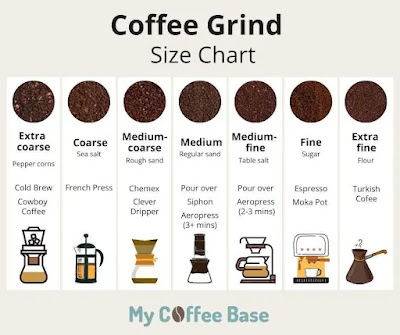Espresso brewing is a complex process that involves several variables, such as the coffee beans, water temperature, brewing time, and pressure. One of the most critical variables that impact espresso flavor is the grind size. The grind size can affect the extraction of coffee particles and the flavor and aroma of the final shot. In this article, we'll explore the impact of grind size on espresso flavor and how you can achieve consistent results with your espresso machine.
How Grind Size Affects Espresso Extraction and Flavor
The size of coffee particles affects the surface area that is exposed to water during the brewing process. Fine particles have a larger surface area, which makes it easier for water to extract more flavor compounds. On the other hand, coarse particles have a smaller surface area, which makes it more difficult for water to extract the same amount of flavor compounds. This is why a consistent and appropriate grind size is crucial to achieve the right balance of acidity, sweetness, bitterness, and body in an espresso shot.
Finding the Ideal Grind Size for Your Espresso Machine
The ideal grind size for your espresso machine depends on several factors, such as the type of coffee beans, the roast level, and the brewing method. As a general rule, a fine grind size is suitable for pump-driven espresso machines, while a coarser grind size is better for steam-driven machines. However, you should always experiment with different grind sizes to find the one that works best for your taste preferences and equipment.
Factors Affecting Grind Size, including Bean Variety, Age and Roast
Several factors can affect the grind size, including the bean variety, roast level, and age. For example, lighter roasts require a finer grind size than darker roasts, as they have a higher density and less moisture. Similarly, fresher beans require a coarser grind size than older beans, as they release more CO2 during the brewing process. It's important to understand how these factors can affect the grind size to achieve consistent results with your espresso machine.
Manual vs Automatic Grinders: Pros and Cons
Manual and automatic grinders have their pros and cons when it comes to grind size consistency and flavor. Manual grinders offer greater control over the grind size and are more affordable, but they require more effort and time to use. Automatic grinders, on the other hand, are faster and more convenient, but they may not offer as much precision and control over the grind size. It's up to you to decide which type of grinder suits your needs and budget.
Tips for Achieving Consistent Grind Size and Flavor
To achieve consistent grind size and flavor in your espresso shots, it's essential to use a high-quality grinder, keep your beans fresh and properly stored, and experiment with different grind sizes and brewing parameters. Make sure to clean your grinder regularly and adjust the grind size according to the taste and aroma of the coffee. With practice and patience, you can master the art of espresso brewing and enjoy the perfect shot every time.
After experimenting with
different grind sizes and taking note of the resulting flavors, it becomes
clear that grind size plays a crucial role in the flavor of an espresso shot.
The optimal grind size is subjective and dependent on individual taste
preferences, as well as the specific beans and brewing equipment being used.
However, by understanding the impact of grind size on espresso flavor and
taking the time to experiment with different sizes, it is possible to achieve a
perfectly balanced and delicious shot of espresso. Whether you are a
professional barista or a home brewing enthusiast, mastering the art of
grinding coffee beans is a key step in making the perfect espresso shot.

Commentaires
Enregistrer un commentaire